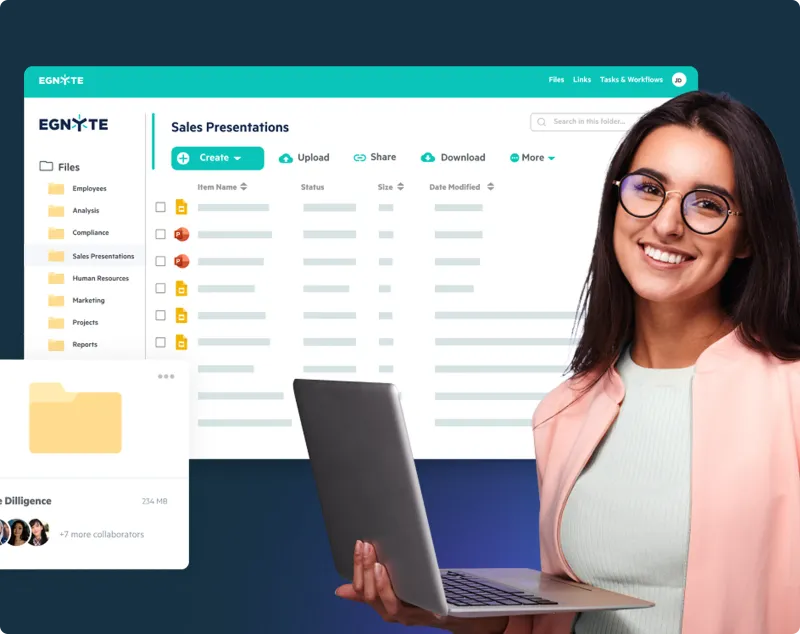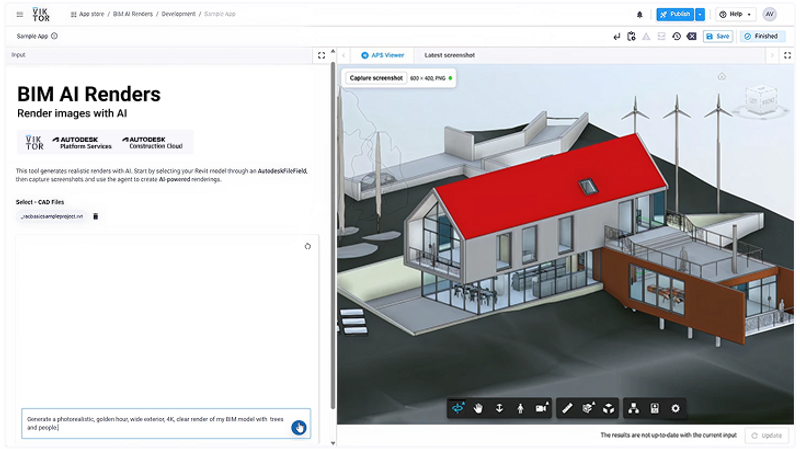AEC leaders gathered to explore the latest tools and AI innovations in the industry
The Architect’s Newspaper and aec+tech are collaborating for the second year to organize TECH+ conferences across the U.S. This year, for the first time, the event was held in Dallas, where leading AEC firms showcased cutting-edge AI implementations and technological advancements, offering a glimpse into the future of the industry.
James Warton from HKS delivered an inspiring keynote on computational design and material technology.

James discussed HKS’s design workflows and their integration of AI in iterative processes. He highlighted aspects of form-finding and how generative design can be trained to align with design intentions. A notable point was made about the potential AI brings to design processes, emphasizing that we ultimately control how it integrates into workflows that make sense to automate. Maintaining unique human creativity remains a core principle when adopting generative design capabilities within a team.

Three exciting AEC solutions were presented, including Graphisoft, where Miles Smith discussed the company's tools—developer of one of the first BIM authoring tools in the industry—and their integration of AI. The emphasis was on enabling collaboration among all stakeholders while maintaining an accurate data set, which paves the way for efficient and sustainable building practices.
Miles Smith, North America’s Solution Manager at Graphisoft, explained how Archicad’s BIM modeling workflows can be enhanced by AI. In many cases, the focus has been on developing an organization’s AI adoption strategy, particularly in relation to overall digital transformation.

Tania Madah discussed the Lean Architect's cutting-edge tools, focusing on how the Lean methodology, originally developed by Toyota in 1937, can enhance the architectural design and documentation process today.

Roy Tripp introduced D5 Render’s AI-driven features. The presentation covered visualization workflows as it relates to rendering fidelity improvements thanks to AI generative capabilities. D5 focuses their product to adapt to existing BIM modeling tools, enabling easier interoperability.
Automation in Practice: AI Experiments and Transformations
Experts including Nate Meade, Randall Daniel, Luc Deckinga, and Harish Palani shared insights on the AI tools they are experimenting with in their offices. Nate discussed PromeAI and how Page's approach to projects is enhanced by technology.
Randall showcased five AI tools being used at SmithGroup, including public tools like Adobe’s Firefly, Microsoft Copilot, and EvolveLab’s Veras, as well as in-house developments such as SmithGroup Diffusion and Wordsmith. SmithGroup Diffusion utilizes proprietary Stable Diffusion models for generative design visualizations, and both Wordsmith and SmithGroup Diffusion were developed in-house by SmithGroup's team.

Luc and Harish also discussed Perkins & Will's AI strategies and shared insights on how they leverage Rhino with machine learning to improve the quality of their models. They demonstrated how these innovations are enhancing workflows.
As AI's generative capabilities raise concerns about human creativity, it was strongly emphasized that we should leverage AI to maintain individuality. An approach focused on supervised learning was encouraged, enabling teams to shape technologies that augment—not replicate—originality and creativity. A notable example is how SmithGroup optimized their visualization renders with custom Stable Diffusion models, allowing design styles to align with their creative intent.

Luc Deckinga (Digital Practice Manager, Perkins & Will), Harish Palani (Design Application Technician, Perkins & Will)
Technology in Practice: The Studio View
At the “Technology in Practice: The Studio View” panel, technology leaders discussed their firms’ efforts to stay current with the latest AEC technologies. The architectural design industry is continually presented with “new” software and products, raising the question of what is genuinely innovative versus what is merely repackaged. The experts shared their vetting processes and their efforts to integrate existing systems with new solutions.
The Beck Group’s CRO Scott Lowe, highlighted their comprehensive AI-powered analytics systems, and Daniel Stine presented AI-powered sustainability analysis at Lake Flato.
The main highlight of Scott’s presentation focused on The Beck Group’s AI development enhancing firm information systems, and improved collaboration mechanisms, reducing operational silos.

The Beck Group’s CRO, Scott Lowe, highlighted their comprehensive AI-powered analytics systems, while Daniel Stine presented AI-driven sustainability analysis at Lake Flato.
The main focus of Scott’s presentation was on The Beck Group’s AI development, which enhances firm information systems and improves collaboration mechanisms, thereby reducing operational silos.
Daniel Stine from Lake Flato focused on decarbonization processes through established guidance systems and principles of occupant wellbeing. By leveraging tools like Autodesk Forma and other internal AI tools, Daniel and his team can design more effectively to mitigate noise pollution, high wind levels, and quantify embodied and operational carbon in their projects.

Ram Ramisetti from McCarthy Building emphasized the importance of collaboration with startups like Joist.AI to influence AI product development. He explained that at McCarthy, they don't just subscribe to certain products; instead, they partner with these startups and engage in the development process.

McCarthy Building Co., a leading national construction company recognized for delivering high-quality projects, has embraced AI technology to streamline its proposal management process. Ram from McCarthy shared the company’s approach to improving efficiency, reducing manual effort, and increasing the success rate of securing competitive bids, thereby driving innovation in the construction industry.
Professor Asma Mehan, an Assistant Professor at Texas Tech University, discussed emerging technologies in urban design pedagogy, specifically highlighting a case study on augmented reality applications. In today’s urban design landscape, the advent of big data and digital technologies has introduced innovative approaches to exploring urban spaces. This study focuses on the application of Augmented Reality (AR) and Extended Reality (XR) technologies in the metropolitan areas of Houston and Amsterdam.
These technologies create immersive "Phygital Installations" that blend physical and digital elements, effectively capturing people’s perceptions and enhancing urban design proposals. By fostering human-centered planning, AR and XR technologies make urban design more interactive and accessible to the public. Houston, with its rapid industrial growth and diverse socio-economic landscape, provides a unique setting to examine the impact of these technologies on urban form and socio-environmental dynamics.

Following Asma’s presentation, Dr. Sina Mostafavi discussed Hybrid Intelligence Design and Architectural Robotic Systems. As an associate professor at Texas Tech University’s College of Architecture, his current research focuses on the innovative application of emerging materials and technologies. Sina shared insights on human-machine interactions, leveraging robotics and AI, and how to design workflows that maintain hybrid intelligence throughout the pipeline.
Climate, Energy, & Data
Alfonso Hernandez, Regional Design Leader at Gensler, and Jason Wheeler, Design Technology Manager at Gensler, spoke at the “Climate, Energy, & Data” panel.
As climate change becomes a cornerstone of practice, new tools are emerging to address the carbon intensity of building materials, energy usage, and supply chain transparency. These tools empower designers, engineers, and architects at all stages of design and construction, enabling them to make a real-world impact. Hear from technology leaders as they discuss the latest tools for assessing climate impact in design.

Dollar cost of climate change (in USD billions)
The event provided a comprehensive exploration of how these technologies are transforming design and construction, from urban planning enhanced by AR and XR to real-time rendering with AI capabilities. It is clear that AI is reshaping the architecture and construction landscape, offering new tools for efficiency, decision-making, and creativity. The potential of these advancements continues to grow, pushing the boundaries of what is possible in the built environment. The discussions highlighted the evolving role of AI and technology in driving productivity, creativity, and sustainability in the AEC sector. We are excited to be part of this movement, supporting AEC professionals with their technology needs and staying at the forefront of the latest developments and implementations.
Recent Articles
Learn about the latest architecture software, engineering automation tools, & construction technologies

Pioneering Technical Report Management (TRM™) for AEC Firms: A Quire Deep Dive
Learn how Quire founder Kelly Stratton is reinventing technical reporting in our latest aec+tech interview, where its purpose-built TRM™ platform, WordBank-powered standardization, AI-driven Smart Search, quality control, and the Lazarus knowledge engine come together to help AEC, environmental, and CRE teams cut reporting time and errors while unlocking their institutional expertise.

Moving to the Cloud: Egnyte’s Staged Approach for Architecture Firms
As projects grow, AEC firms are rethinking data management and collaboration. This article outlines Egnyte’s six-stage Architecture Cloud Journey—a practical roadmap for moving from on-premise systems to secure, collaborative cloud environments. From assessment to continuous improvement, it shows how to streamline workflows, strengthen security, and future-proof with AI-ready infrastructure.

SaaS Founders: Are You Timing Your GTM Right?
This article was written by Frank Schuyer, who brings firsthand experience as a founder in the software and SaaS world. In this piece, he explores how founders can unlock faster growth and stronger market traction by integrating go-to-market strategy (GTM) from the very beginning of product development—rather than treating it as an afterthought.

The VIKTOR App Builder: Putting Automation into Every Engineer's Hands
The VIKTOR App Builder is changing how engineers automate their work. Built on VIKTOR’s secure, enterprise-ready platform, it lets users turn calculations, checks, and post-processing tasks into shareable browser-based apps—no coding required. In this interview, CPO Stijn Jansen explains why the team created it, how it bridges no-code, low-code, and full-code workflows, and what it means for the future of AI-assisted engineering.